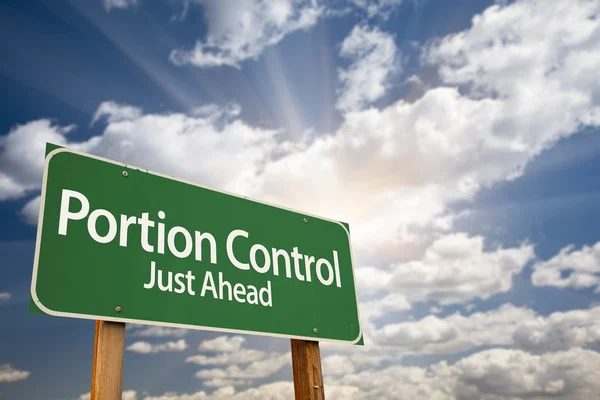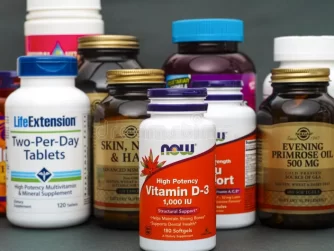Let’s talk about something simple, but powerful: portion control.
In a world where “more” is often mistaken for “better,” it’s easy to lose sight of how much food our bodies actually need. Super-sized meals, all-you-can-eat buffets, and late-night snacking have normalized overeating. And yet, it’s not always about what you eat—it’s about how much you eat.
As a personal trainer and certified nutritionist, I’ve worked with hundreds of people chasing fat loss, better energy, or just more control over their health. And nine times out of ten, when they start practicing portion control, results happen. Not because they’re starving themselves—but because they’re finally giving their bodies a chance to function the way they were designed.
What Is Portion Control, Really?
Portion control is the practice of eating the right amount of food for your individual needs. That doesn’t mean counting every almond or eating off a food scale forever. It means learning to recognize how much fuel your body actually requires—and trusting that you don’t need to overfeed it to feel satisfied.
It’s a skill. Not a restriction.
Think of it like this: food is fuel. You don’t overfill your gas tank, right? You stop when it’s full. Portion control helps you do the same with your body.
Why Portion Control Works for Weight Loss
Here’s the simple math: when you eat fewer calories than your body burns, you lose weight. Portion control allows you to naturally reduce caloric intake without obsessing over every macro or cutting out entire food groups.
But this isn’t just about weight loss—it’s about efficiency. Your body doesn’t need massive quantities of food at every meal. When you reduce portion sizes appropriately, your digestive system works better, your energy levels stay more stable, and your body composition begins to shift toward leaner, healthier levels.
Also, you’re not relying on “quick-fix” diets. You’re learning a lifelong skill.
Understanding Leptin: Trusting Your Body’s Signals
Let’s break down something important: leptin.
Leptin is a hormone your body naturally produces, and it plays a key role in appetite regulation and fat storage. Think of it as your body’s internal fuel gauge. When you’ve eaten enough, leptin sends a message to your brain: “We’re good—no more food needed.”
The problem? When you constantly overeat or eat too quickly, you override leptin’s signals. Your body doesn’t get the chance to say, “Stop, I’m full.”
Portion control gives leptin a chance to do its job. By slowing down and eating appropriate amounts, your hormones begin to rebalance. You start to feel full sooner and crave less. It’s not willpower—it’s chemistry.
The Mindset Shift: You’re Not Depriving Yourself
Let’s get something straight: portion control isn’t about restriction. It’s about awareness.
The goal isn’t to eat like a rabbit—it’s to eat like someone who respects their body. If you’re used to cleaning your plate no matter how full you are, it’s going to take some mindset work. That’s okay. Change is a process, not a flip of a switch.
Start by asking yourself:
- Am I hungry, or just bored?
- Does this portion serve my goal, or my craving?
- Can I wait 10 minutes before going for seconds?
Portion control is an act of intentional living. You’re not punishing yourself. You’re practicing self-respect.
Practical Tips to Master Portion Control
Let’s talk strategy. Here are some ways to start implementing portion control without stressing out:
- Use smaller plates.
Sounds too easy, right? But it works. Studies have shown that smaller plates help people naturally eat less while still feeling satisfied. - Plate your food, don’t eat from the bag.
Ever crushed half a bag of chips without realizing it? That’s mindless eating. Plating your food forces awareness. - Eat slowly.
Give leptin a fighting chance. It takes about 20 minutes for your brain to register fullness. - Follow the “half-plate rule.”
Fill half your plate with vegetables, one-quarter with lean protein, and one-quarter with complex carbs. Balanced, simple, and visually easy. - Hydrate before meals.
Sometimes hunger is really thirst. Drinking water before eating can help reduce overeating. - Pre-portion snacks.
Buy or prep single-serving portions of nuts, fruits, or even treats. This way, you can enjoy your food without going overboard.
Real-World Example: John’s Story
John was one of my clients who’d been trying to lose the same 15 pounds for years. He exercised consistently but struggled with late-night snacking and large portion sizes, especially after work. We didn’t overhaul his diet—we just started with portion control.
He began measuring out his dinners, slowing down his eating, and paying attention to when he was actually full. Within two weeks, he noticed a difference in energy. Within two months, the scale started to shift. And by the end of six months, he’d not only lost the 15 pounds—he kept it off. No crash diet. No food restrictions. Just portion awareness.
The Long Game: Lifestyle Over Dieting
Here’s what I want you to take away: portion control is not a diet. It’s a lifestyle tool. It teaches you to eat in alignment with your goals and your body’s natural rhythms.
If you’re tired of yo-yo dieting, if you’re done with unsustainable meal plans and food guilt, this is your next step. And the best part? You can start at your very next meal.
So don’t think of portion control as eating less. Think of it as eating smarter.
You’re not trying to be perfect—you’re trying to be consistent. And that’s where the real magic happens.
Final Thought:
The more you practice portion control, the more your body learns to trust the signals it was built to give you. Leptin does its job, your metabolism stays active, and your mind finally finds peace with food.
So take a breath, slow it down, and honor your body with what it needs—not just what it wants in the moment. You’ve got this.







